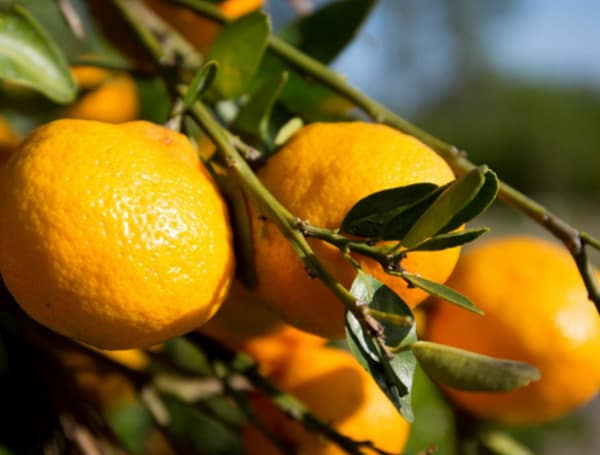The forecast for Florida’s orange crop has dropped 29 percent after Hurricane Ian and Hurricane Nicole, putting the citrus industry on a path toward its lowest production since the Great Depression.
The U.S. Department of Agriculture on Friday released a report that said Florida is expected to produce 20 million boxes of oranges during the current growing season, down from a previous forecast of 28 million boxes.
Projections also dropped 10 percent for grapefruit production and 14 percent for specialty fruits.
The previous forecast was issued in October as the season started. It did not take into account the Category 4 Hurricane Ian, which made landfall Sept. 28 in Southwest Florida and caused large numbers of uprooted trees and downed fruit in citrus-growing areas such as Collier, Lee, DeSoto, Hardee, and Polk counties.
Even before Ian, the industry expected a decrease in production, with surveys showing smaller fruit and fewer oranges per tree. Growers have long faced pressures from deadly citrus-greening disease and development.
Florida Citrus Mutual CEO Matt Joyner issued a statement Friday that offered hope for dealing with issues such as citrus greening.
“We have every reason to believe that Florida’s iconic citrus industry is on the verge of an upswing because of the new tools available to fight greening,” Joyner said in the statement. “Research shows plant growth regulators can reduce fruit drop, greening tolerant trees are showing promise, and new treatment methods are proven to restore tree health. However, it’s no surprise that these positive developments are not reflected in this month’s crop estimate as Florida growers endured a freeze and two hurricanes this year, all on top of the decade-long battle against citrus greening.”
The forecast for the 2022-2023 season would put the industry at roughly half of the production from the 2021-2022 growing season, which itself resulted in decades-low numbers.
A University of Florida-Institute of Food and Agricultural Sciences report released weeks after Ian estimated the storm’s impact to the citrus industry at $146.9 million to $304.3 million. The Florida Department of Agriculture and Consumers Services put damages at $675 million. The Category 1 Hurricane Nicole made landfall Nov. 10 near Vero Beach.
The Florida Citrus Commission issued a news release saying the new “forecast reflects the very real challenges that Hurricane Ian, Hurricane Nicole, and the ongoing impacts of citrus greening have created for growers across the state.”
“Growers are focused on recovery and continue to invest in new tools to help rebuild. Florida citrus growers are resilient,” Shannon Shepp, executive director of the Bartow-based department, said in a prepared statement. “They have withstood centuries of extreme weather, and this hurricane season is no exception.”
In the news: Florida GOP Donor Found Dead In Locked Vehicle From Apparent Suicide
In addition to 20 million 90-pound boxes of oranges, the forecast projects 1.8 million boxes of grapefruit during the 2022-2023 season. That compares, for example, to 3.3 million boxes of grapefruit during the 2021-2022 season. The industry uses 90-pound boxes as a benchmark.
If the forecast is correct, orange production would be the lowest since the 1936-1937 season, while grapefruit production is on pace to be the smallest since the 1911-1912 season, the third year records were kept on the state’s different citrus crops.
Specialty fruits, primarily tangerines and tangelos, are expected to fill 600,000 boxes during the 2022-2023 season, down 150,000 from the 2021-2022 season.
The overall citrus total under the new forecast would represent the smallest crop since 18.108 million boxes were filled in the 1929-1930 season, which was highlighted by a Mediterranean fruit fly invasion as growers were recovering from severe hurricanes in 1926 and 1928.
Throughout the 1990s and early 2000s, before the detection of citrus greening, overall production annually topped 200 million boxes.
Visit Tampafp.com for Politics, Sports, and National Headlines, or signup for our free newsletter by clicking here.
Android Users, Click Here To Download The Free Press App And Never Miss A Story. Follow Us On Facebook Here Or Twitter Here.

